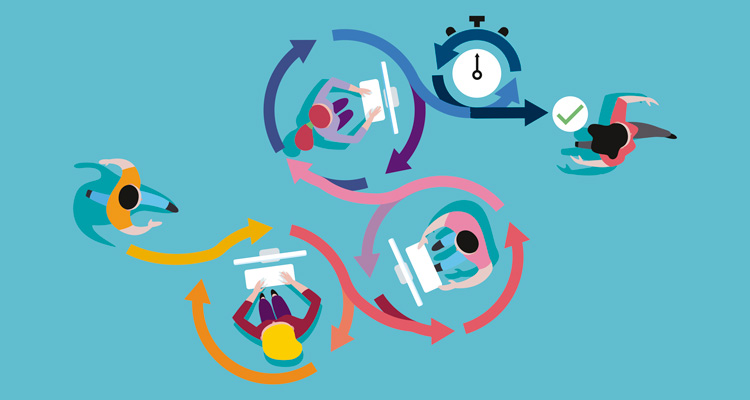
Practicing Lean depends upon fostering a student mentality — recognizing what you don’t know, and approaching the unknown with a curious, humble mind. Whether you’re new to Lean or a seasoned expert, reading about the experiences and practices of others is an excellent way to practice a key Lean concept: continuous improvement. At Planview AgilePlace, when people ask us how to learn more about Lean, we often direct them to these excellent Lean management books, written by our esteemed colleagues in the Lean community.
These five Lean management books can often be found circulating among our teams at Planview AgilePlace. No matter where you are in your journey, read these books to expand your thinking and continue to grow in your practice of Lean.
Our Top 5 Recommended Lean Books
The Goal: A Process of Ongoing Improvement by Eliyahu M. Goldratt, Jeff Cox
Great for: Teams new to Lean, looking to learn more about continuous improvement.
This business novel is set at a manufacturing plant in a declining industrial town. Its main character, Alex Rogo, is tasked with turning the plant operations around in three months. Through the novel, readers learn how bottlenecks in the manufacturing process hinder the company from meeting its goals and how Alex improves the process by adopting the Socratic method.
This is Lean: Resolving the Efficiency Paradox by Niklas Modig & Par Ahlstrom
Great for: Teams and executives implementing Lean, looking for a deeper understanding of the “why” behind Lean thinking.
Published in 2011, This is Lean provides a clear, concise framework of what is Lean — and what isn’t. In a clear and concise way, it describes what Lean means to both executives and team members, bolstered by examples of Lean at work. Read this book to learn how to structure your thinking as you continue on your journey towards continuous improvement.
Managing to Learn: Using the A3 Management Process by John Shook
Great for: Managers and executives seeking a framework for identifying, framing, and acting upon problems and challenges across the organization.
The A3 management process is one of the main tools that Toyota uses to solve problems and manage a Lean environment. This Lean management book provides an introduction to the A3 process as well as methodologies to discover the root cause of a problem. Managing to Learn is written as a conversation between a manager and his boss, as they use the A3 process to navigate challenges at every level of the organization.
Implementing Lean Software Development by Mary Poppendieck and Tom Poppendieck
Great for: Software development teams seeking practical advice, ready-to-use techniques, and a deep understanding of Lean software development.
This sequel to the 2003 breakthrough novel, Lean Software Development, takes Lean one step further and explains in detail how to implement successful development using Lean and Kanban. Using real-life examples, the authors cover the approaches to management, team structure, feedback loops, decision-making, and prioritization that lead to success in Lean software development.
Principles of Product Development Flow by Don Reinertsen
Great for: Organizations looking to apply Lean to help them navigate the inherent uncertainties of new product development.
Don Reinertsen, a thought leader in Lean thinking, discusses how flow happens in product delivery processes using Lean and Kanban thinking. By focusing on eight major areas that help product organizations achieve flow, the author uses data and practical methods to guide product organizations to this new approach to delivery processes.




